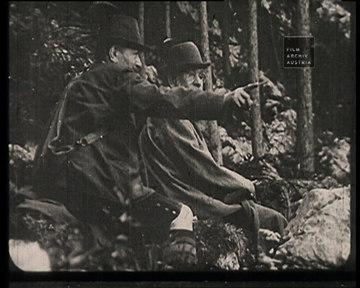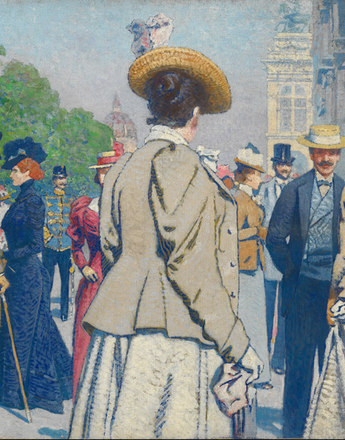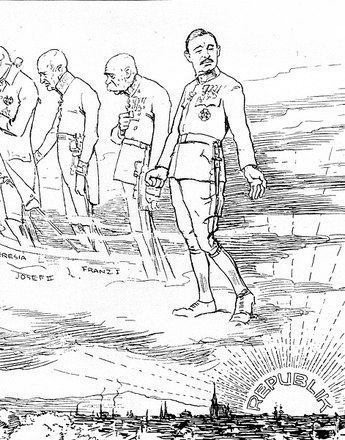Cinematographic reporting on the duties of the members of the court quickly developed into a specialization by domestic and foreign companies. Weeks before an event the production companies began preparing and advertising what were billed as ‘sensational’ pictures.
Emperor Franz Joseph I was at the centre of this idealized representation. For generations he was the symbol of the Austrian Monarchy. At the start of the twentieth century, the ‘old man in Schönbrunn’, who sought to uphold the ‘honour and dignity’ of the empire, even taking up arms to do so, represented the continuity but at the same time the weakness of the dynasty and the monarchical ruling principle. At receptions, openings and festivities the cameramen captured the Emperor as an icon, one that is still valid to this day thanks to the recurrent images in historical documents and his representation in feature films. The monarchical pictorial canon has Emperor Franz Joseph I as the ever-present ‘imperial hunter’, nature-loving and surrounded by his ‘adoring subjects’. In 1930 a cinematic commemoration to him was created with the film Emperor Franz Joseph as Regent and Person.
Emperor Karl, the grand-nephew of Franz Joseph I, later heir to the throne and ultimately the last Emperor of Austria and King of Hungary, is also fixed in the visual memory thanks to recurrent exposure in the media. His marriage to the 19-year-old Princess Zita of Bourbon-Parma was filmed by the French Gaumont company and has also become an iconic historical document. Emperor Franz Joseph, archdukes and princesses, high nobility and members of the court all assembled for the marriage celebration. In some case the film is the only existing record of these dignitaries. Documentary film makers and TV stations would later single them out for reinsertion in a new cinematic context. These pictures are thus far more familiar than many other films of the Monarchy.
The documentaries made following the assassination of Crown Prince Franz Ferdinand and his wife Princess Sophie von Hohenburg have also become global pictorial icons. Crown Prince Franz Ferdinand sought a peaceful settlement of international tensions, including those in the Balkans. His support of a ‘trialistic’ reconstruction of the Danube region, the merger of all southern Slavs under the Habsburg sceptre, was at odds with the 1867 Compromise and Serbian ambitions. He and his wife were shot by Serbian assassins on 28 June 1914 in Sarajevo. As a reaction, Serbian minorities were attacked in Sarajevo and their businesses and houses damaged.
Translation: Nick Somers
Korte, Barbara/Paletschek, Sylvia/Hochbruck, Wolfgang (Hrsg.): Der Erste Weltkrieg in der populären Erinnerungskultur, Essen 2008
Leidinger, Hannes/Moritz, Verena/Moser, Karin: Österreich Box 1: 1896-1918. Das Ende der Donaumonarchie, Wien 2010
-
Chapters
- Imperial and Royal myth in film
- Presentation of the imperial household: pictorial icons
- What the films didn’t show 1: Social contrasts
- What the films didn’t show 2: Religious diversity
- What the films didn’t show 3: nationalist conflicts
- Lack of resources and wartime financial difficulties on film
- Film documents: after the disaster










